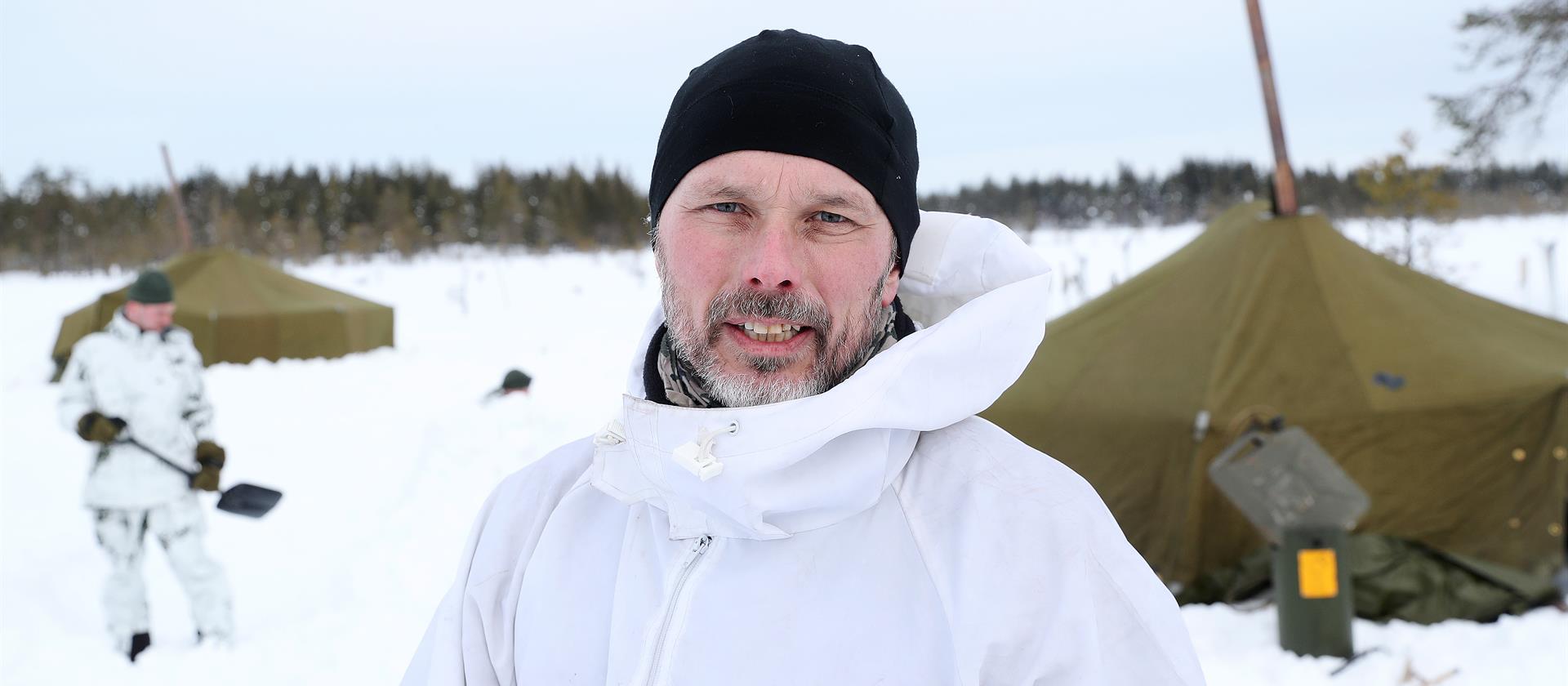The Norwegians are hosting Trident Juncture 2018 which is a major NATO exercise and at the same time training for the Norwegians to support the total defense concept which they are reinvigorating in the “new normal” European security situation.
A recent article on the Norwegian Ministry of Defence website highlighted one aspect of the preparation:
Cold Knowledge is Hot in NATO
NATO’s Trident Juncture exercise is getting ready for Norway this autumn. This has led to a record demand for military winter knowledge.
“This is my first time cross-country skiing. It’s very different, and I’ve been using muscles that I normally don’t use”, says First Lieutenant Norbert from the German Armoured Engineer Battalion 130.
Norbert is standing in a snowy forest outside the town of Elverum in eastern Norway. Along with 60 other officers from Germany and the US he is here for the Allied Winter Course hosted by the Norwegian School of Winter Warfare.
WINTER IS HERE
The foreign soldiers have had a brutal first encounter with the seemingly neverending Norwegian winter. Yesterday, the temperature was –27 °C (–17 ℉). Today, however, it is almost spring, the temperature has reached a whooping –11 °C (+12 ℉).
“It doesn’t matter if it’s 20 or 10 degrees below. It’s just freezing anyway”, laughs Norbert, adding:
“Yesterday, I had icicles hanging from my beard. I had to take a picture and send it to my wife. And tomorrow we’re going ice bathing. I may be smiling now, but I won’t laugh tomorrow.”
ALL-TIME HIGH
Norbert is one of many thousand foreign soldiers who are coming to Norway this autumn, to participate in NATO’s exercise Trident Juncture.
To deal with the cold Norwegian autumn weather, the participants need “cold knowledge”.
Until recently, cold knowledge was a niche thing – but not anymore.
The Norwegian School of Winter Warfare usually holds one annual winter course with 30–40 participants. This winter, however, the school has held four courses, each with 60 participants.
“We could probably have held ten courses, the interest is very high. We are positively surprised by the interest, especially from countries like the Netherlands, the United Kingdom and the US”, says Major Knut Hummelvoll, chief for the school’s Winter Section.
He thinks the renewed interest is partly due to NATO’s shift from large operations in Afghanistan and the Middle East, to activity in its core areas in Europe and North America.
“I think this shift has brought more focus on winter training and cold knowledge. NATO has standing forces in Poland and the Baltics, and these are also very cold areas. The Alliance needs winter knowledge”, he adds.
HARD ROUTINES
Each winter course lasts four hectic weeks. During this time, the participants learn how to ski, how to dress for the cold, and how to establish a camp out in the field.
“They also learn terrain assessment and tactics for military operations in the winter”, says Hummelvoll.
The course is concluded with twelve field days where the participants get to practice their new knowledge.
“We practice so-called hard routines, like waking up in the tent in the morning and putting on your cold, wet clothes from yesterday. It’s brutal, but that’s what works”
SPOTS OF SURPRISE
Norbert, the German First Lieutenant, has had several surprises during the weeks.
“I never knew that white spots in the skin is a sign of frostbite. That was new to me”, says Norbert. He looks forward to pass on the winter knowledge to his fellow soldiers in Germany.
“We look forward to coming to Norway for Trident Juncture. As an engineering battalion in Europe, we are used to operating on large, wide plains. Norway has many steep, narrow valleys and fjords, which will give us another type of training.
We also get to meet soldiers from other countries and see how they operate.
MOTIVATED
Some metres away from Norbert, two other German officers are building a wall of snow around their tent. Like their fellow countryman, neither Master Sergeant Alexander nor First Lieutenant Arne has any massive experience with snow or skiing.
“We have just tried cross-country skiing for the first time. It was quite challenging, especially with the sleigh and a 30 kilo (66 lbs) backpack”, says Alexander, platoon leader in the Rotenburg Jaeger Battalion 91.
He too believes that a lot of winter knowledge has disappeared from the Alliance after many years of focus outside NATO’s core areas.
“I think the shift from Afghanistan back to NATO’S core areas has brought more focus on winter training and cold knowledge.”
“A lot of practical know-how is lost and we need to learn this again. Therefore, we look forward to the exercise in Norway, and we are very motivated”, he says.
His colleague Arne agrees. He works at the German Armed Forces’ Medical Supply Centre in Kiel.
“For us to function and operate all over NATO, we need to know each other and the different landscapes. Attending this course is an opportunity few soldiers get, so we are quite proud to be here”, says Arne.
For our recent special report on the Nordics and the Strategic Shift, see the following:
https://sldinfo.com/2018/05/the-nordics-and-the-strategic-shift/


